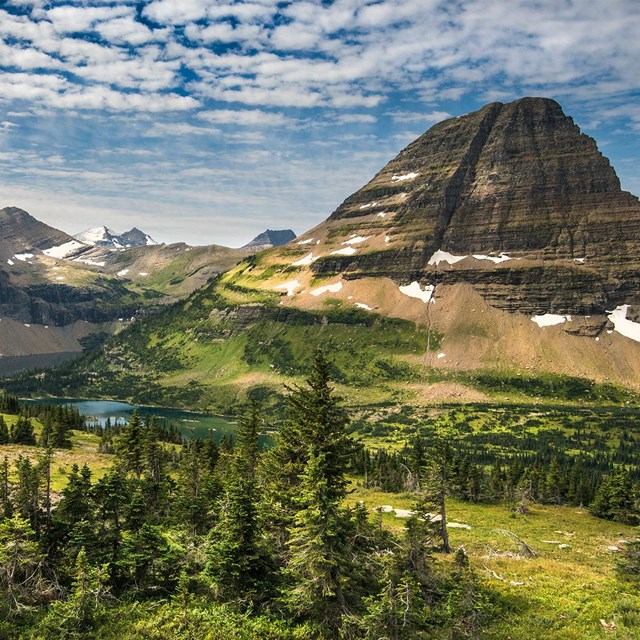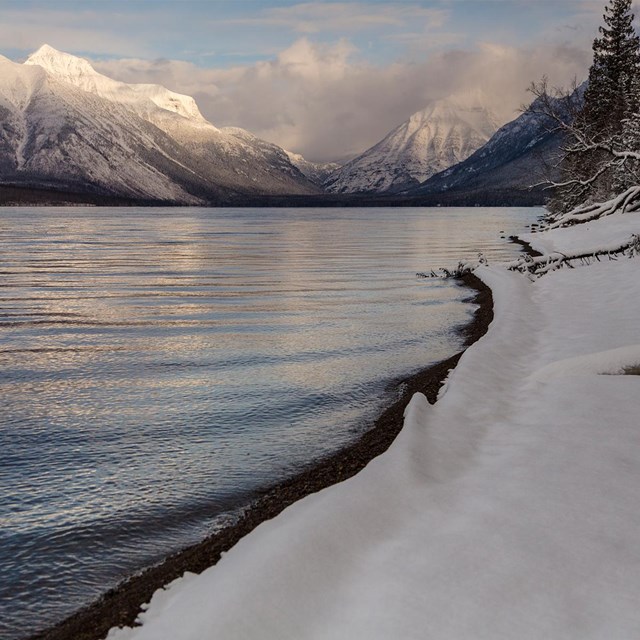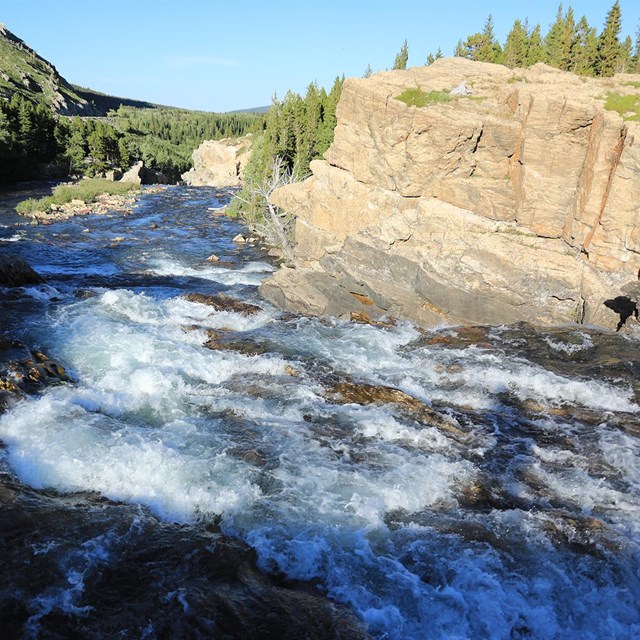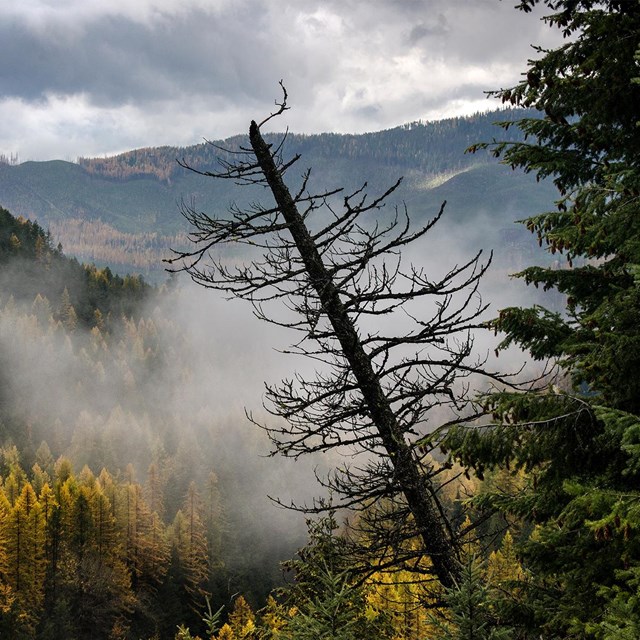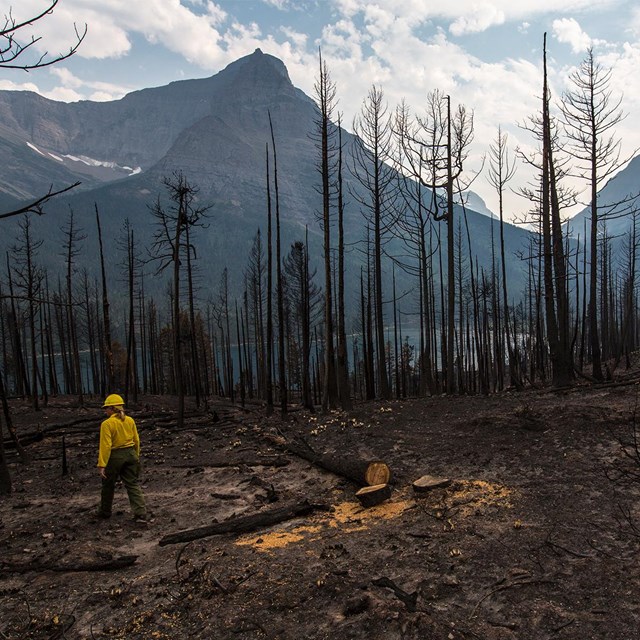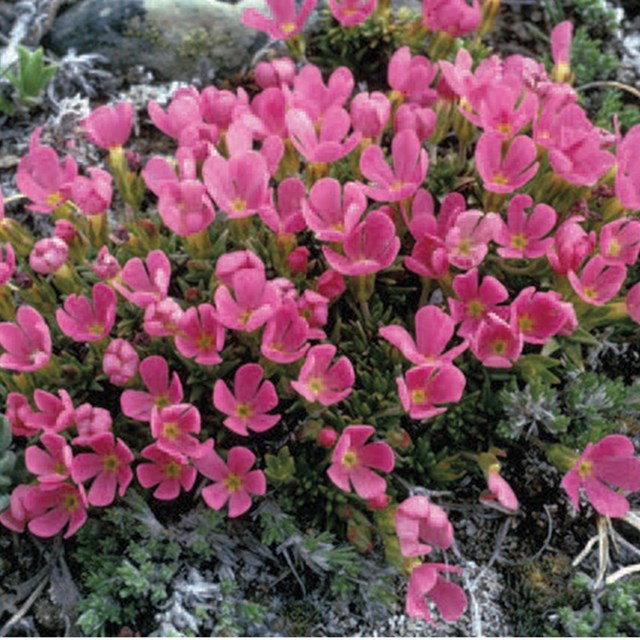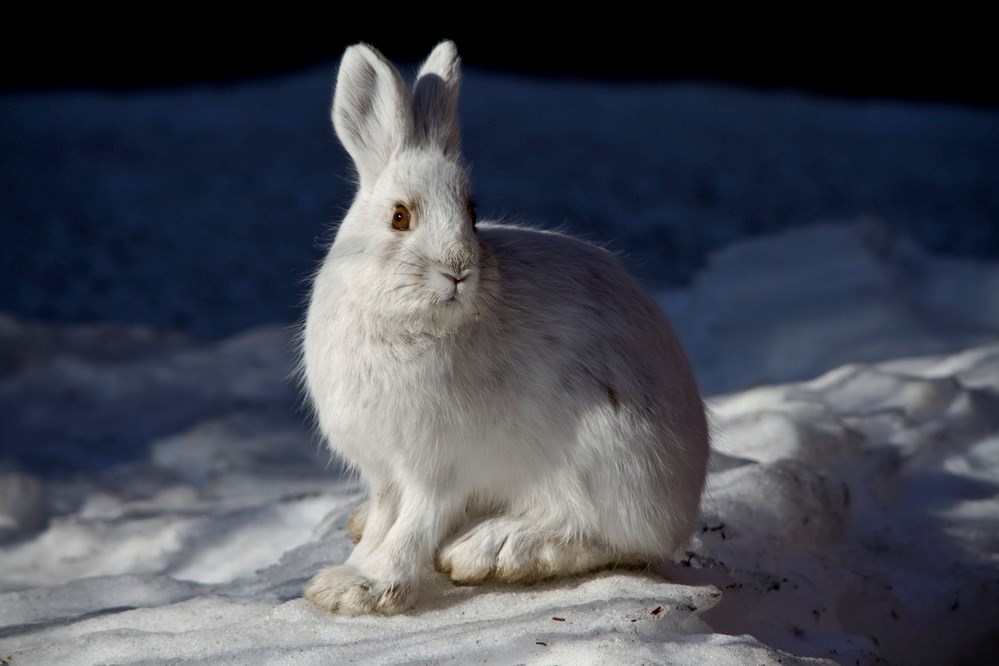
NPS 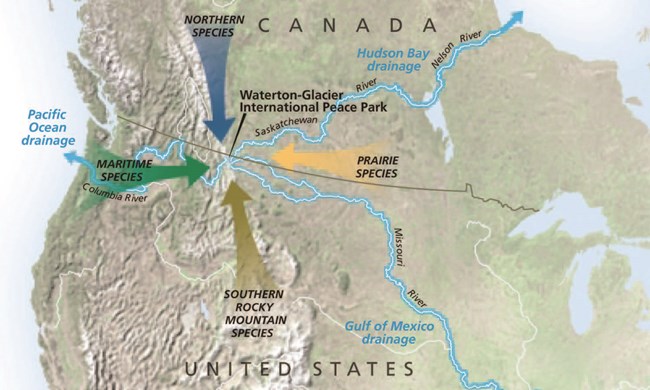
Map NPS Glacier National Park is located at the crossroads of several different biological communities Plants and animals associated with northern Canada, the Pacific Coast and the prairies of the Great Plains mingle here with alpine plants and animals of the Rocky Mountains. The result is a mixture of plants and animals that do not usually live together. To help understand what allows Glacier to have so much biodiversity, take a look at the map above. Glacier National Park straddles the Continental Divide of the Rocky Mountains. Here, the Rocky Mountains are at their narrowest point, allowing the biological communities of the Pacific Coast and the Great Plains to come closer together than they are at any point along the Continental Divide. Glacier has significant differences in elevations from east to west. The west valleys are approximatley 3,000 feet and slope up to the Continental Divide at 6,000 feet, and back down to the eastern valleys at 3,000 feet. These elevation differences create incredible temperature differences from the valleys to the peaks. The east side of the park is known for its exceptionally warm Chinook winds in winter and its dry summer winds. There is not a significant difference in rainfall between the east and west sides of the park, in general, but the east side has wider temperature swings than the west side. The east is also windier. The increased wind on the east side of the park creates conditions which make it seem drier than the west. 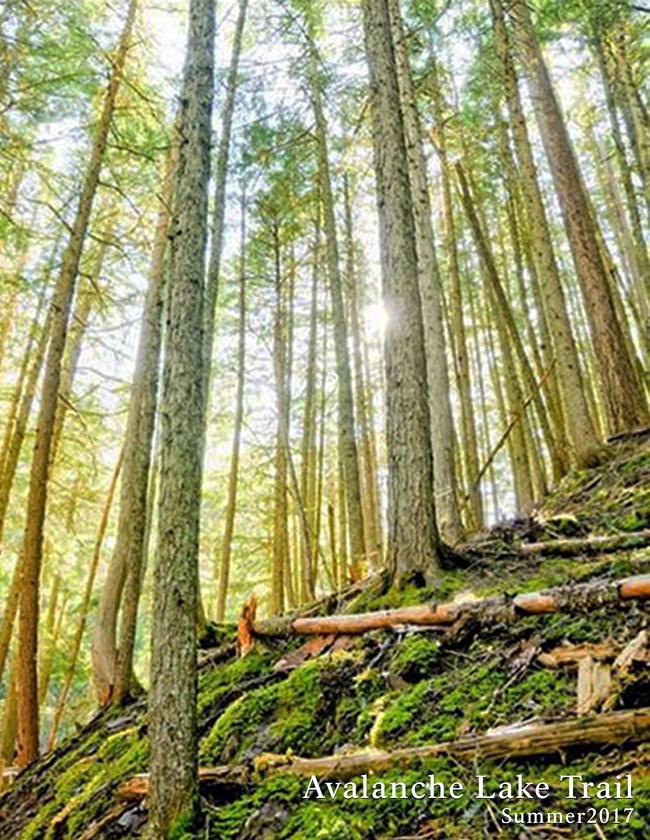
M Osborn Avalanche Lake Trail winds through a lush cedar-hemlock forest on the west side of the park and offers visitors a cool environment filled with giant western red cedar, hemlock, and shade-loving ferns. 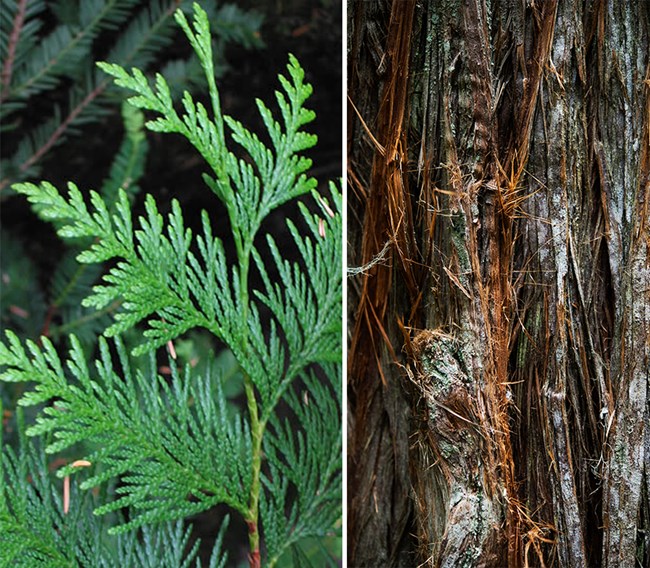
M Osborn NPS Western red cedar, with their stringy, spiraling bark, reach their extreme eastern limits in the U. S. here in the park. Their range fits perfectly within the eastern finger of the maritime climate of the Pacific northwest. Huge cedars have been growing here for hundreds of years, and some trees of the lower Avalanche Creek area are over 500 years old! 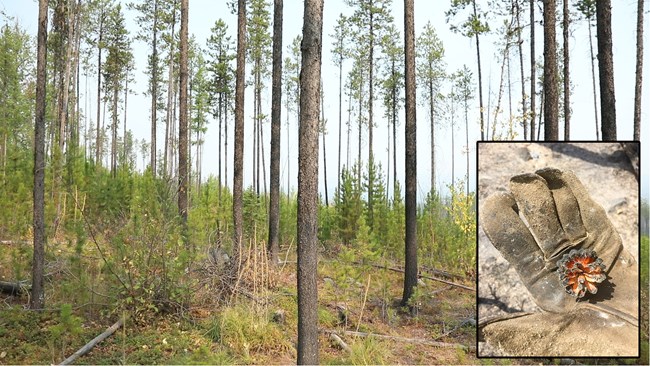
M Osborn Just a few miles away, on the east side of the mountains, Lodgepole pines are the main species of tree. Their small resin-covered cones have adapted to resist fire and take advantage it. The heat from a fire melts the resin opening the cones. This allows the seeds to be dispersed at a time when the forest floor is full of ash-enriched soil and receives plenty of sunlight on account of the canopy being burnt away.
It’s this combination of differences in topography, temperature, wind, fire frequency, soils, and rock, which create such a diverse array of plant communities here. These differences give us stunning verities of wildlife too. Forests in the valleys of the east and west sides of the park, provide food and cover for bears and mountain lions. A few thousand feet higher, rocky cliffs provide habitat for mountain goats, marmots, and ptarmigan. Streams and lakes are home to beaver, muskrat, ducks, and other water-loving birds. Meadows, bursting with wildflowers, support elk, coyotes, hawks, and a number of different rodents. This variety of habitat presents different survival challenges to animals and plants. On the high rocky cliffs of the park, the mountain goat’s thick fur keeps it warm and its specially-developed hooves are great for traction when climbing. On the east side of the park, the bright pink Douglasia plant, has thick, fuzzy leaves that conserve water and a low compact growth profile to reduce wind damage. Variety is the spice of life!
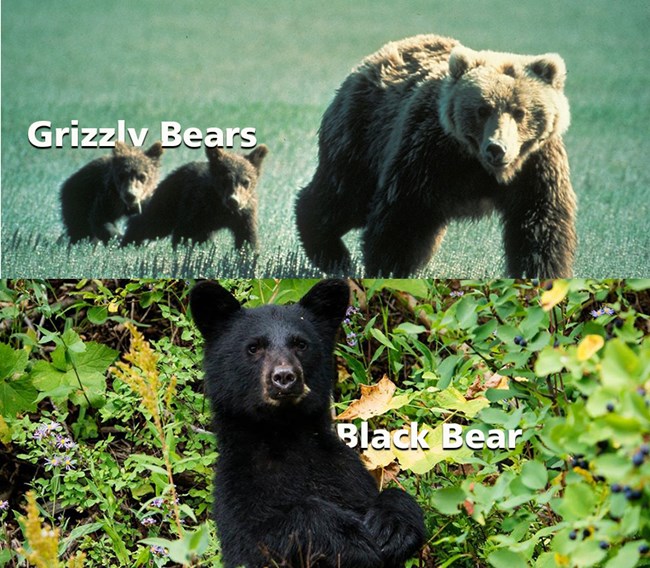
NPS For some animals, sleeping through the winter, or hibernating, is the best option. Animals like hoary marmots and Columbian ground squirrels, prepare for cold winters by spending their summers eating vegetation and putting on pounds. In the marmot’s case, their summer diet allows them to hibernate for up to eight months, when their food is unavailable. When winter comes and food and warmth are hard to find, other animals, like many birds and even some bats, prefer another option: migration. Some bird species, like the western tanager, live and nest in Glacier during the summer and migrate around 3,000 miles to South America in the fall, where food sources are more abundant. Still some animals prefer to stick it out, stay active, and resist or tolerate what the winter has to offer. 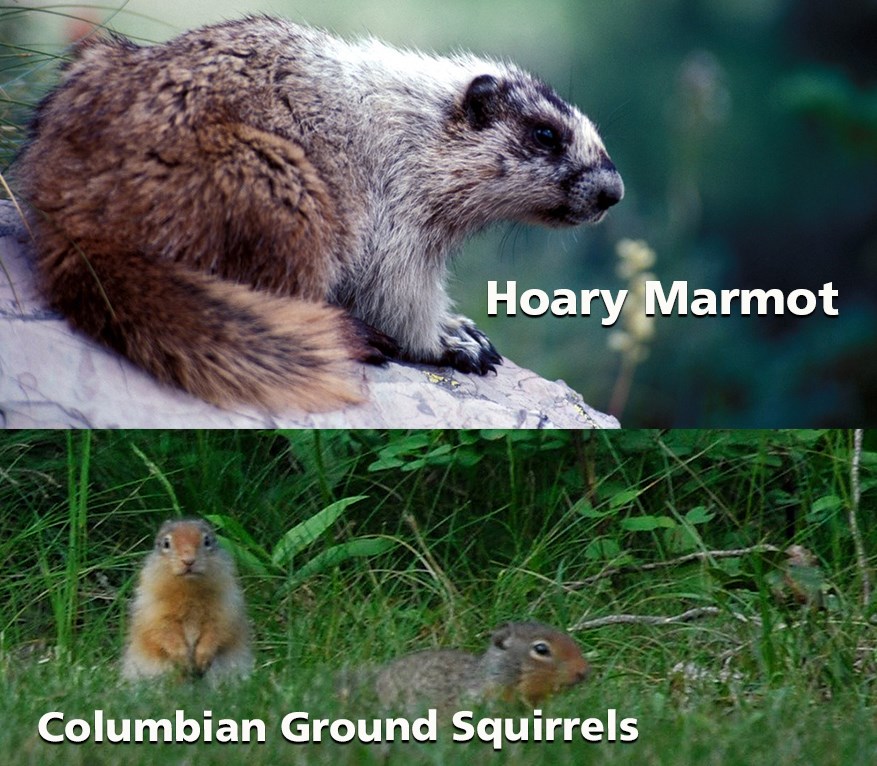
NPS |
Last updated: June 7, 2018

